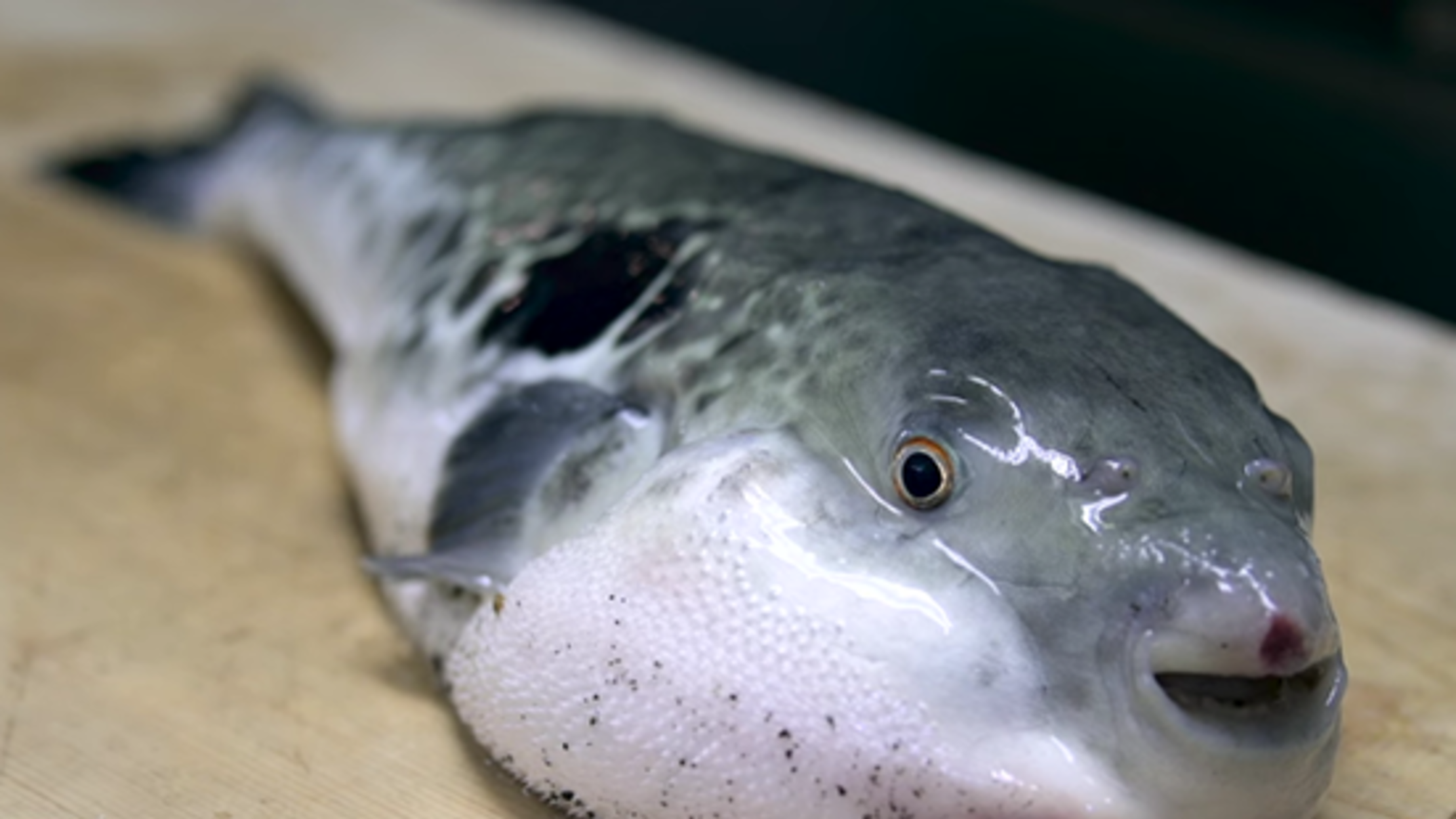
Pufferfish meat used for fugu sashimi gets matured under cloth for a day or two after being killed. A special knife, 'fugu hiki bocho,' is used for this purpose. To solve this, pufferfish meat is cut with a knife into such thin slices that people can see through them and this slicing is called 'usuzukuri' (literally, thin slicing).

Because of this, it becomes too chewy and hard to eat when it is cut as thick as ordinary sashimi. One of the features (to be discussed later) of pufferfish is that it is fibrous. As pufferfish are called 'teppo' in the Kansai region, fugu sashimi is sometimes called 'tessa,' which is an abbreviation of 'teppo sashi' ( sashimi).

Fugu Sashimiįugu Sashimi is sashimi (sliced raw fish) of pufferfish meat. However, in the 1990's, automated machines which were good for practical use were developed and work efficiency started to improve. As this skinning process required expertise, only a limited number of professionals and processing factories were able to do it.
FUGU JAPANESE SKIN
While the skin of the pufferfish was valued as a delicacy, it was also used as a material for folk crafts and industrial arts. Take out the internal organs and wash the fish meat. The work process and its order differ by specialists but the basic order is as follows.Ĭut off the fins such as dorsal and pectoral fins. Licensed puffer fish processing specialists (to be discussed later in this article) carry out this process. This is the process of removing the skin and poisonous parts (mainly internal organs such as the liver) of the pufferfish. This process is called '身欠き' (migaki).Īlso, pufferfish have an outer skin with spines and the process to remove these spines from the skin is called 'kawamuki.'Īfter the 身欠き (migaki) process, the fish are filleted into three pieces, which is sometimes called '磨き' (migaki). However, as pufferfish are poisonous, it is necessary to remove the poisonous parts before filleting. Usually, after being killed on the spot, fish are filleted into three pieces using a method called ' sanmai oroshi.' Meanwhile, a number of old-style restaurants still stick to serving fugu dishes only in winter.

In recent years, freezing and aquaculture technologies have developed, making it possible to eat fugu dishes all year around. It is partly because many fugu dishes are hot meals such as fugu nabe (hot pot) and also because it is the time when fully grown pufferfish come near the Japanese coast for spawning. The best season for pufferfish is said to be 'from aki no higan (autumnal equinox) to haru no higan (the spring equinox),' but the very best season is winter. This is because it was forbidden to eat pufferfish after the Edo period. Teppo' and 'Tetsu' were originally used as jargon. In the Kansai region, fugu is called 'teppo' (literally, a gun) or 'tetsu' for short, as the sounds for the Japanese words for "getting shot" and "being poisoned by pufferfish poison" are the same.

On the other hand, the sound 'fuku' was considered lucky as it is the same as 'fuku' (good fortune).Īnother theory states that a pufferfish was wrapped in a piece of cloth and left to stand overnight before being cooked, which resulted in using the combination of Chinese characters meaning 'cloth' and 'long' that can be read as 'fuku.' The sound 'fugu' was thought to be ominous as it is reminiscent of other Japanese words, 'fuguu' (ill-fated) and 'fugu' (disabled). It is not clear how it started but there are the following theories. In Yamaguchi Prefecture and the Kyushu region, fugu dishes are sometimes called 'fuku dishes' changing the sonant 'gu' to 'ku' (this is common in the tourism industry, but generally, it is called fugu.)
FUGU JAPANESE LICENSE
In Japan, many municipalities oblige cooks to have a special license for the first stage of processing. In the Kitakyushu area, Fukuoka Prefecture as well as in Yamaguchi Prefecture, which are considered the homes of pufferfish cooking, they are called 'Fuku dishes' without the sonant 'gu,' while in Osaka, they are also called 'Teppo dishes' or 'Tetsu dishes.'Īs pufferfish have poison in their internal organs (it is widely known that tiger puffer, which are recognized as an upmarket fish, have tetrodotoxin inside while trunkfish have puff toxin) it is difficult to deal with the fish. Fugu cuisine was mainly developed in Western parts of Japan such as Yamaguchi Prefecture and Osaka Prefecture, and spread all over Japan after the Pacific War. Fugu cuisine' is the collective name for a variety of dishes that use pufferfish.


 0 kommentar(er)
0 kommentar(er)
